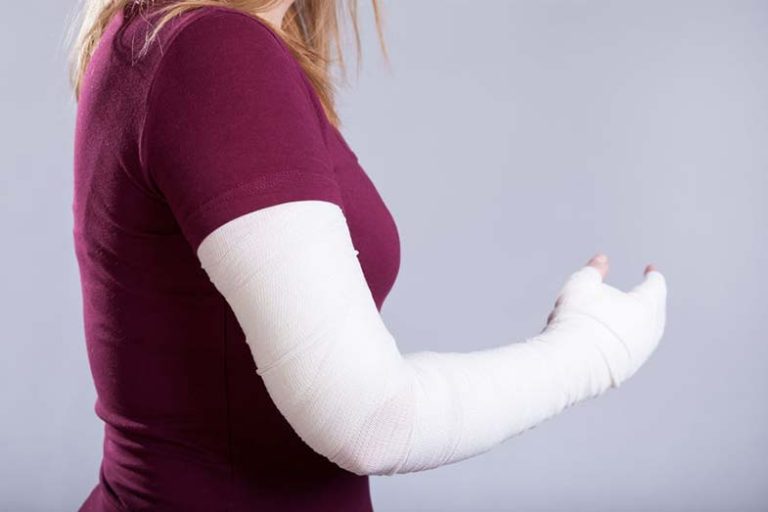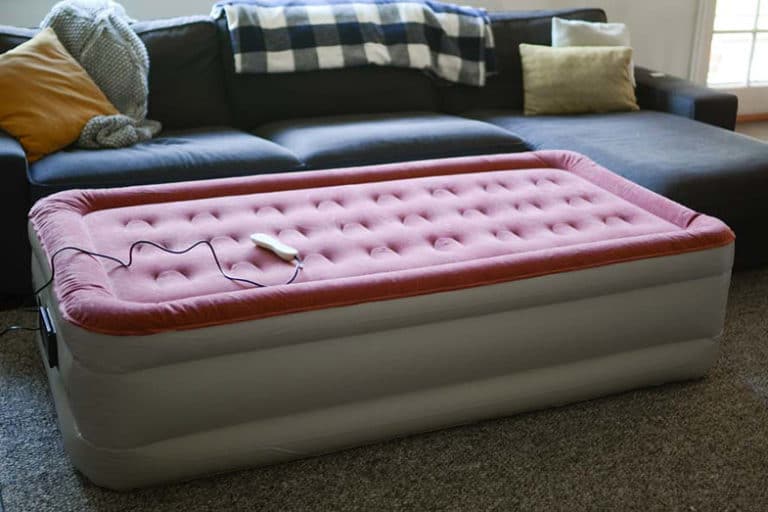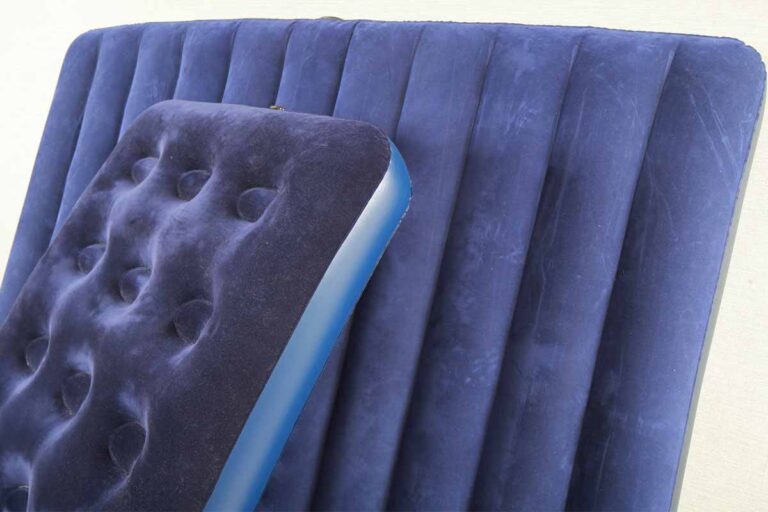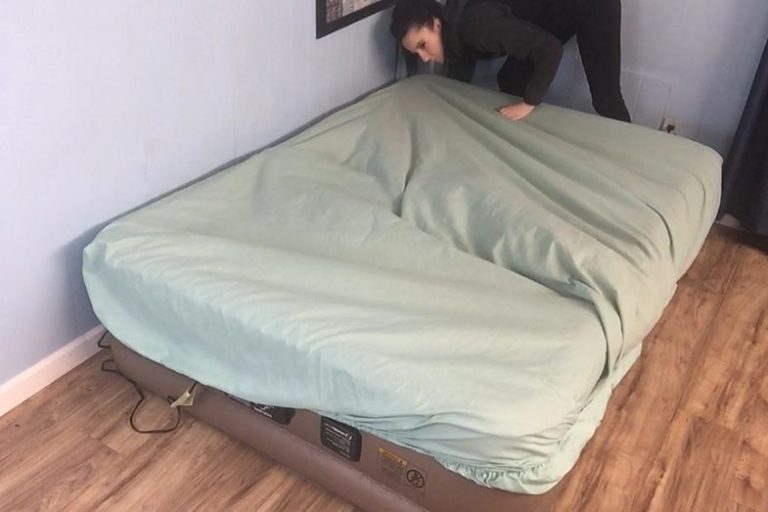How to Sleep with Frozen Shoulder (5 Tips)
Disclosure: We may get commissions for purchases made through links in this post.
Sleep is one of the best parts of the day for it is our time to unplug from the real world and recharge for another busy day ahead. However, a frozen shoulder can definitely ruin this moment. As frozen shoulder pain worsens at night, we do not achieve that much-needed rest and wake up feeling more tired than ever the next day.
How to Sleep with Frozen Shoulder
- Use a Proper Pillow
- Take Pain Medication
- Perform Shoulder Exercises
- Improve your Diet
- Get a Professional Massage
Here are more details about things you can do to sleep with frozen shoulder:

1. Use a Proper Pillow
The way you sleep and what you sleep in matters a lot with frozen shoulder pain management. Sleep on your side or on your back to prevent further pain during night time. For side sleepers, sleep on the opposite shoulder while hugging a pillow across your chest. For many of us, it might be challenging to sleep steadily and control movements while asleep. Place a pillow behind you and on the armpit of the affected shoulder to help lessen movements. You can also use a special bed to prevent yourself from rolling over the affected shoulder. The last thing you want to transpire is waking up due to pain, and finding it hard to sleep again. Avoid putting pressure on the affected shoulder and always sleep on your comfortable side.
Check out this video made by New Dimensions Physical Therapy that explains proper pillow positioning for shoulder pain. In this video, Physical Therapist Rebecca Steiner demonstrates how to place pillows as you sleep to reduce pressure on your shoulders and to ensure better sleep. You will also know more about pillow placements to reduce pain in your back, neck, and hips.
Royal Therapy Memory Foam Pillow (view on Amazon) is an ideal pillow you can use to alleviate shoulder pain. It is filled with memory foam that cradles your head and neck and keeps your spine properly aligned. It is durable, odor-free, and hypoallergenic.
2. Take Pain Medication
Taking pain medication is one of the most common ways to relieve or treat frozen shoulder. Your doctor might prescribe anti-inflammatory medication like ibuprofen, aspirin, or naproxen sodium to help ease shoulder pain and inflammation. Surgery is also a possibility but is rarely necessary for frozen shoulder cases. Remember that pain typically starts at night, so make it a habit to look for available treatment options as early and as regularly as possible.
3. Perform Shoulder Exercises
Consulting a physical therapist for your frozen shoulder is also a great way to help you sleep better at night. This skilled professional can help you increase your range of motion and strengthen your shoulder and rotator cuff muscles. Your PT will have you do exercises in the clinic and at home. Stretching also plays a vital role in alleviating shoulder pain. Popular frozen shoulder stretching activities you can do at home include Pendulum Stretch, Towel Stretch, Finger Walk, and Armpit Stretch. Remember that exercises should match your capacity and condition; that is why consulting a physical therapist is highly recommended. Strengthening and conditioning your body before you sleep also helps you achieve a higher quality of sleep.
4. Improve your Diet
This is something we already know, but we always forget. A proper diet can help the body function better, and it is also a great way to relieve frozen shoulder. Fruits, vegetables, and healthy fats lessen inflammation and help you heal naturally.
Healthy fats like omega-3s are known to reduce inflammation. Fish oils, for example, contain essential fatty acids for joint health and overall wellness.
5. Get a Professional Massage
Frozen shoulder is defined by stiffness and pain. Luckily, there are a wide variety of options, such as massage and therapy. Massage helps relax your muscles and helps relieve muscle stiffness. There are massage techniques designed to help lessen frozen shoulder syndrome, so make sure to pay a visit to a massage therapist near you. Aside from a good massage, you can also use heating pads for your frozen shoulder problems.
Check out Pure Enrichment PureRelief Neck and Shoulder Heating Pad (view on Amazon). It has a moist heat option, and it contains smooth micromink fibers for maximum comfort. It heats in seconds to provide quick pain relief for your neck and shoulders.
Do’s And Don’ts For Frozen Shoulder
Frozen shoulder or adhesive capsulitis is a severe loss of shoulder movement, and it’s something we don’t want to experience as we sleep. There’s not enough scientific explanation as to why the pain is stronger at night. The best you can do is take a step ahead and remember the dos and don’ts for this condition.
The Do’s
- Exercise regularly.
- Eat healthily.
- Maintain proper posture.
- Consult a specialist.
- Use proper pillows and mattresses.
- Get a massage.
The Don’ts
- Don’t ignore the pain. Early detection is essential.
- Don’t sleep on the affected shoulder.
- Don’t do activities that require heavy lifting.
- Don’t be inactive.
- Don’t self-medicate. Always consult a physician and a therapist.
Let’s go over some of the most popular questions and concerns about Frozen Shoulder.
What Is The Main Cause Of Frozen Shoulder?
Frozen shoulder is caused by inflammation, scarring, and thickening of the capsule surrounding the shoulder joint. People are also at risk for frozen shoulder if they had a previous injury or if they have Parkinson’s disease, tuberculosis, diabetes, hormonal imbalance, or a weak immune system. An extended period of inactivity due to injury or illness are also likely to experience frozen shoulder symptoms. Age and gender also play a prominent role in this condition. People, most likely women who are 40 years or older, are more likely to develop and experience frozen shoulder.
Can I Work With Frozen Shoulder?
Perhaps this is one of the top concerns of people with frozen shoulder. Some people feel intense pain throughout the day, and this can be very disruptive, especially in the workplace. There’s less room for movement and more instances of unbearable pain. Frozen shoulder may be a result of tissue damage or underlying medical conditions. Only you and your health consultant can assess if you are still fit to work. The good thing is, you can prevent it from worsening by maintaining proper care and following the activities listed above. Rest, exercise and healthy food are your best friends for any body pain. Increase your range-of-motion exercises as you go along and you’ll be better in no time.
Signs That Frozen Shoulder Is Starting To Thaw
Lack of sleep caused by frozen shoulder is definitely bad news. How long does it take for your frozen shoulder to thaw? It is said that most frozen shoulder cases improve on their own within 15 to 30 months. Healing will depend on the person’s condition and health habits, but it usually takes longer than simple body aches and injuries. Loads of patience is needed because you may not experience results immediately after drinking medicines or following a healthy lifestyle. Some signs that your shoulder is starting to heal is when the stiffness goes away, and you start having a more extensive range of motion. You can now start moving your shoulders regularly and sleep without experiencing intense pain.
Conclusion – How to Sleep with Frozen Shoulder
Prevention is better than cure. What you do, how you move, and what you eat can significantly affect your body. Make sure to get correctly diagnosed once you notice frozen shoulder symptoms. These include a dull and achy pain and stiffness in the shoulder and is more noticeable at night. This condition disrupts your sleep and may last from one to 3 years, so it is best to detect symptoms as early as possible. When diagnosed with frozen shoulder, be extra patient, and start learning about the treatment options and workouts you can do to help alleviate pain.






